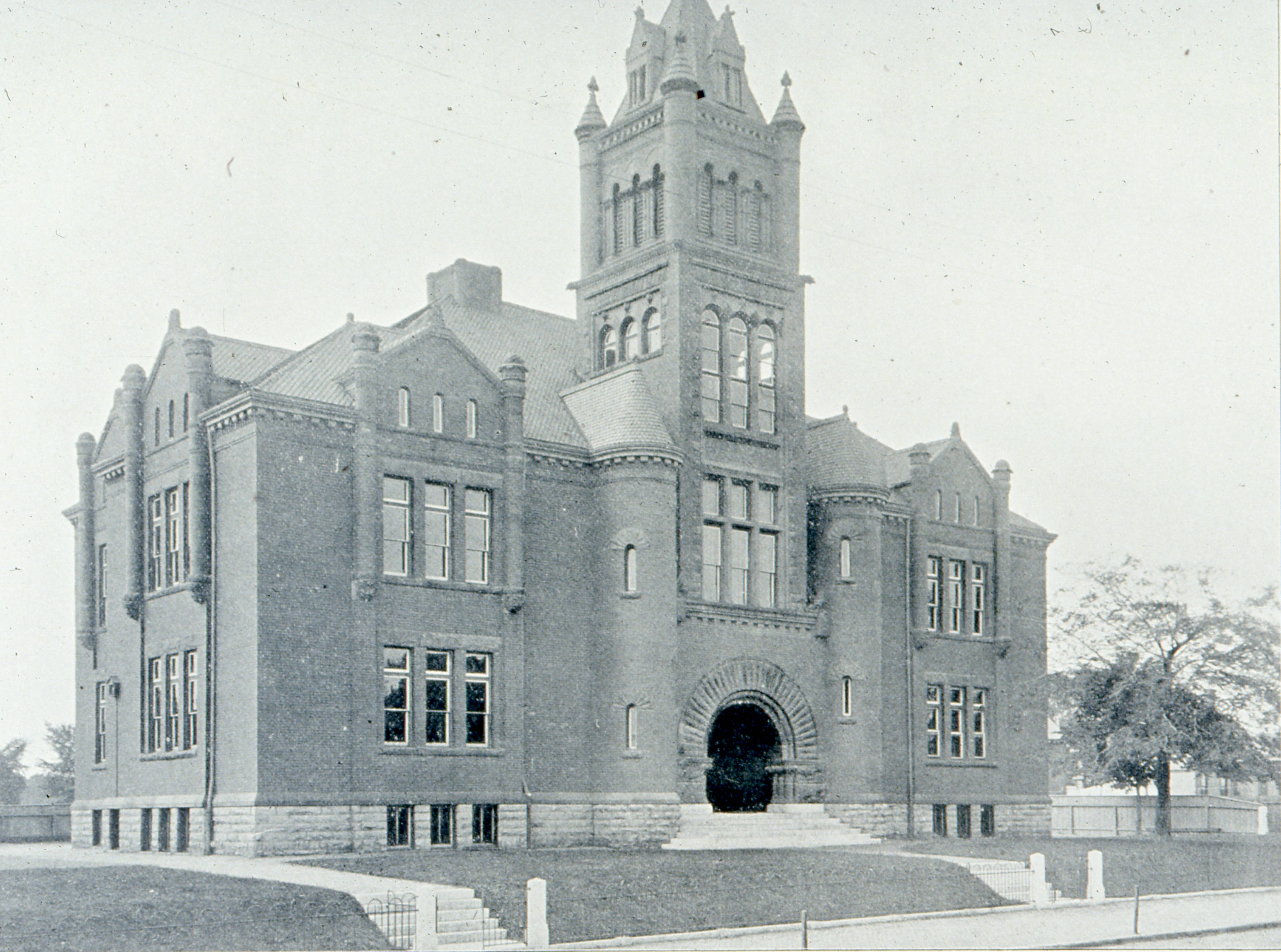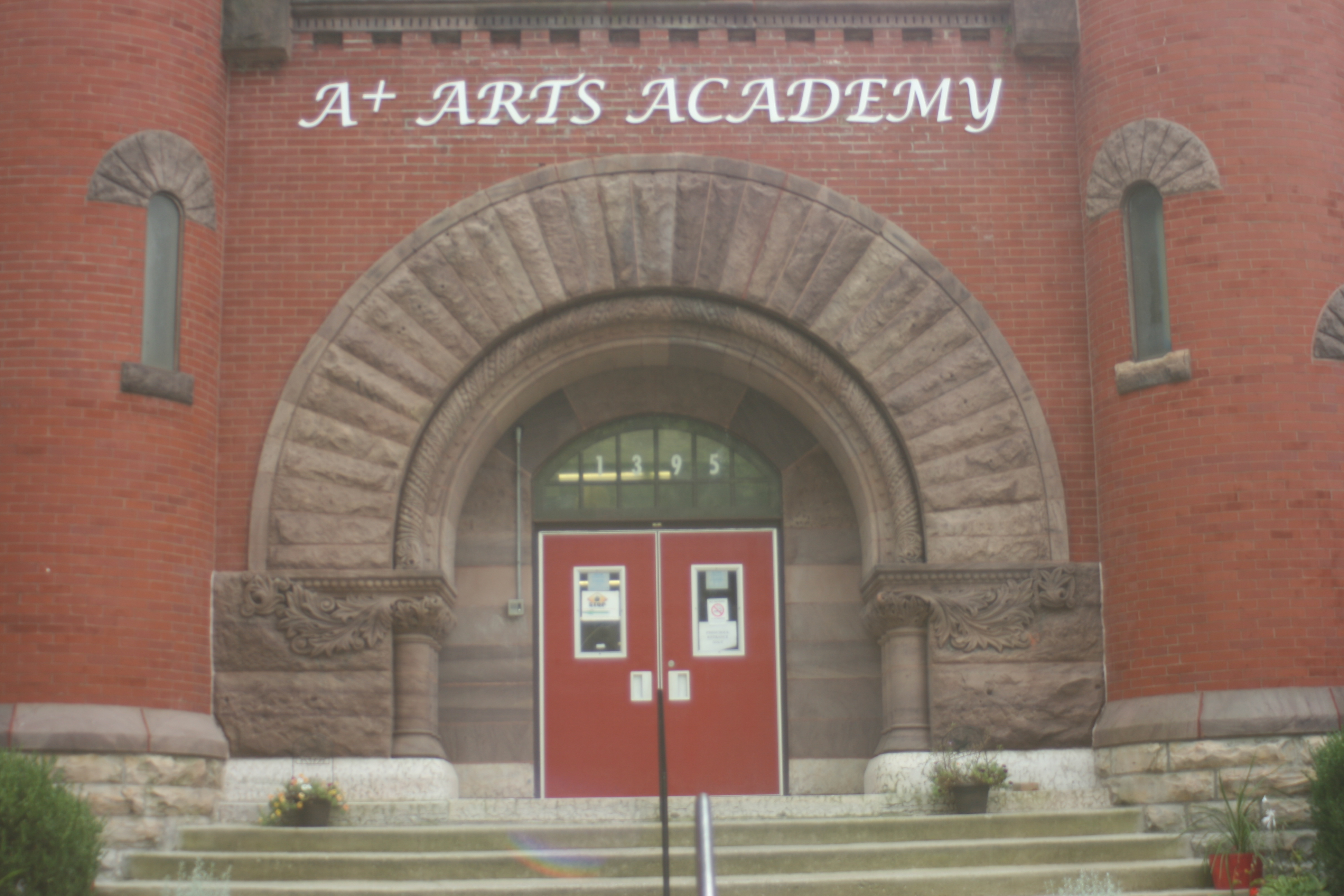Fair Avenue Elementary School on:
[Wikipedia]
[Google]
[Amazon]
The Fair Avenue Elementary School is a historic school building in the Franklin Park neighborhood of
 The Fair Avenue School was built at a time of significant population growth in Columbus. Following the American Civil War, an influx of new residents led the school board to construct new schools nearly every year. The Fair Avenue School was built from 1889 to 1890; contracts were let in 1889 and architect
The Fair Avenue School was built at a time of significant population growth in Columbus. Following the American Civil War, an influx of new residents led the school board to construct new schools nearly every year. The Fair Avenue School was built from 1889 to 1890; contracts were let in 1889 and architect
 The building was designed by prolific Columbus-area architect
The building was designed by prolific Columbus-area architect
Columbus, Ohio
Columbus () is the state capital and the most populous city in the U.S. state of Ohio. With a 2020 census population of 905,748, it is the 14th-most populous city in the U.S., the second-most populous city in the Midwest, after Chicago, and t ...
. The building contributes to the Columbus Near East Side District
The Columbus Near East Side District is a historic district in the Near East Side of Columbus, Ohio. The site was listed on the National Register of Historic Places in 1978. A portion of the district, the Bryden Road District, was added to the ...
, on the National Register of Historic Places
The National Register of Historic Places (NRHP) is the United States federal government's official list of districts, sites, buildings, structures and objects deemed worthy of preservation for their historical significance or "great artistic v ...
. It was built in the Richardsonian Romanesque
Richardsonian Romanesque is a style of Romanesque Revival architecture named after the American architect Henry Hobson Richardson (1838–1886). The revival style incorporates 11th and 12th century southern French, Spanish, and Italian Romanesque ...
style in 1890, having been designed by prolific Columbus architect Frank Packard
Frank L. Packard (June 11, 1866 October 26, 1923) was a prominent architect in Ohio. Many of his works were under the firm Yost & Packard, a company co-owned by Joseph W. Yost.
Life and career
Frank Lucius Packard was born June 11, 1866 in ...
. The building, originally housing a school as part of the Columbus Public School District, currently houses one of three campuses of the A+ Arts Academy.
History
 The Fair Avenue School was built at a time of significant population growth in Columbus. Following the American Civil War, an influx of new residents led the school board to construct new schools nearly every year. The Fair Avenue School was built from 1889 to 1890; contracts were let in 1889 and architect
The Fair Avenue School was built at a time of significant population growth in Columbus. Following the American Civil War, an influx of new residents led the school board to construct new schools nearly every year. The Fair Avenue School was built from 1889 to 1890; contracts were let in 1889 and architect Frank Packard
Frank L. Packard (June 11, 1866 October 26, 1923) was a prominent architect in Ohio. Many of his works were under the firm Yost & Packard, a company co-owned by Joseph W. Yost.
Life and career
Frank Lucius Packard was born June 11, 1866 in ...
was chosen to design the building. His fee was $672, remarkably low even though the board was considering hiring a school architect in order to save costs. The building's commission reportedly caused the board to question its decision, leading them to hire David Riebel
David Riebel (August 7, 1855 – July 29, 1935) was a German-American architect in Columbus, Ohio. He was the head architect for the Columbus public school district from 1893 to 1922. In 1915, ''The Ohio Architect, Engineer and Builder'' consider ...
as the first school architect. The building cost $32,692. The school celebrated its 50th anniversary in 1942 with a reunion event for alumni.
In 1967, a crude fire bomb was thrown into the school building, though it detonated without serious damage.
In 2012, the vacant school building was put up for sale. It was purchased for $300,000 by the A+ Arts Academy, a charter school, in 2013.
The building's exterior remains nearly unchanged in appearance since when it was constructed, though small wings or additions have been added at least seven times, including in 1900, 1957, and 1963.
Architecture
Frank Packard
Frank L. Packard (June 11, 1866 October 26, 1923) was a prominent architect in Ohio. Many of his works were under the firm Yost & Packard, a company co-owned by Joseph W. Yost.
Life and career
Frank Lucius Packard was born June 11, 1866 in ...
, built shortly before his partnership with Joseph W. Yost. AIA Columbus indicated it is one of several buildings that proves his competence as an architect before and after his partnership with Yost. The building was included in Yost & Packard
Yost & Packard was an architectural firm based in Columbus, Ohio, United States. The firm included partners Joseph W. Yost and Frank Packard. It was founded in 1892 and continued until Yost moved to New York City in 1899, after which Packard t ...
's ''Portfolio of Architectural Realities''. Packard chose the style, then his reigning favorite, as it began to decline in popularity (lasting from c. 1875 to 1890). The building is still often considered the best local example of this style.
The Fair Avenue School makes use of elements of Romanesque Revival
Romanesque Revival (or Neo-Romanesque) is a style of building employed beginning in the mid-19th century inspired by the 11th- and 12th-century Romanesque architecture. Unlike the historic Romanesque style, Romanesque Revival buildings tended to ...
architecture; it is considered a "prime late example" of the Richardsonian Romanesque
Richardsonian Romanesque is a style of Romanesque Revival architecture named after the American architect Henry Hobson Richardson (1838–1886). The revival style incorporates 11th and 12th century southern French, Spanish, and Italian Romanesque ...
style. The exterior predominantly has walls of red brick, a hipped slate roof with a low pitch, and carved stone details throughout. It is a rigidly symmetrical building with a feeling of solidity and bulk. The exterior wall spaces are only lightly taken up by doors and windows; towers, turrets, and arches typical of the Richardsonian style are abundant.
The main block of the building is rectangular, with two stories topped by a hipped roof. The roof is intersected by projecting gable-roofed wall dormers, each of which has triple rectangular windows and heavy stone lintels and sills on the first and second floors. Round brick turrets flank these windows on the second floor, with carved stone corbel
In architecture, a corbel is a structural piece of stone, wood or metal jutting from a wall to carry a superincumbent weight, a type of bracket. A corbel is a solid piece of material in the wall, whereas a console is a piece applied to the s ...
s at the base and spherical knobs at the top.
The building's tall central tower is its main feature. At its base is the main entranceway, recessed and underneath a heavy stone arch. The arch rests on a rusticated stone base, with foliage details carved into a portion of it, alongside several stubby colonnette A colonnette is a small slender column, usually decorative, which supports a beam or lintel. Colonettes have also been used to refer to a feature of furnishings such as a dressing table and case clock, and even studied by archeologists in Roman ...
s. The tower's second- and third-floor windows are framed in stone; between these is a panel bearing the school's original name. The top floor of the tower, a belfry, has round-arched louvered openings, separated by thin colonnettes and flanked by four round conical-roofed turrets. The tower's pyramidal roof contains a gable-roofed dormer at each of its four sides. The tower is flanked by two turrets with partially conical roofs.
See also
*National Register of Historic Places listings in Columbus, Ohio
__NOTOC__
This is a list of the National Register of Historic Places entries in Columbus, Ohio, United States. The National Register is a federal register for buildings, structures, and sites of historic significance. This is intended to be a compl ...
* Schools in Columbus, Ohio
This is a list of public school buildings in Columbus, Ohio, of historical or architectural importance to the Columbus Public School District. Items are listed by opening date.https://digital-collections.columbuslibrary.org/digital/collection/ccs/i ...
References
External links
* {{authority control National Register of Historic Places in Columbus, Ohio Historic district contributing properties in Columbus, Ohio 1890 establishments in Ohio Public elementary schools in Ohio Richardsonian Romanesque architecture in Ohio School buildings completed in 1890 Schools in Columbus, Ohio Franklin Park (Columbus neighborhood) Frank Packard buildings Columbus City Schools